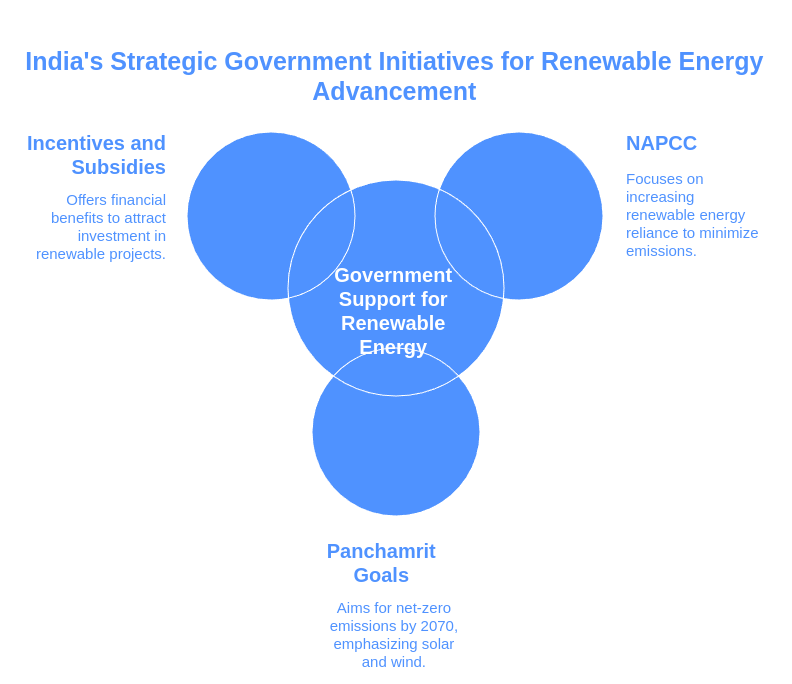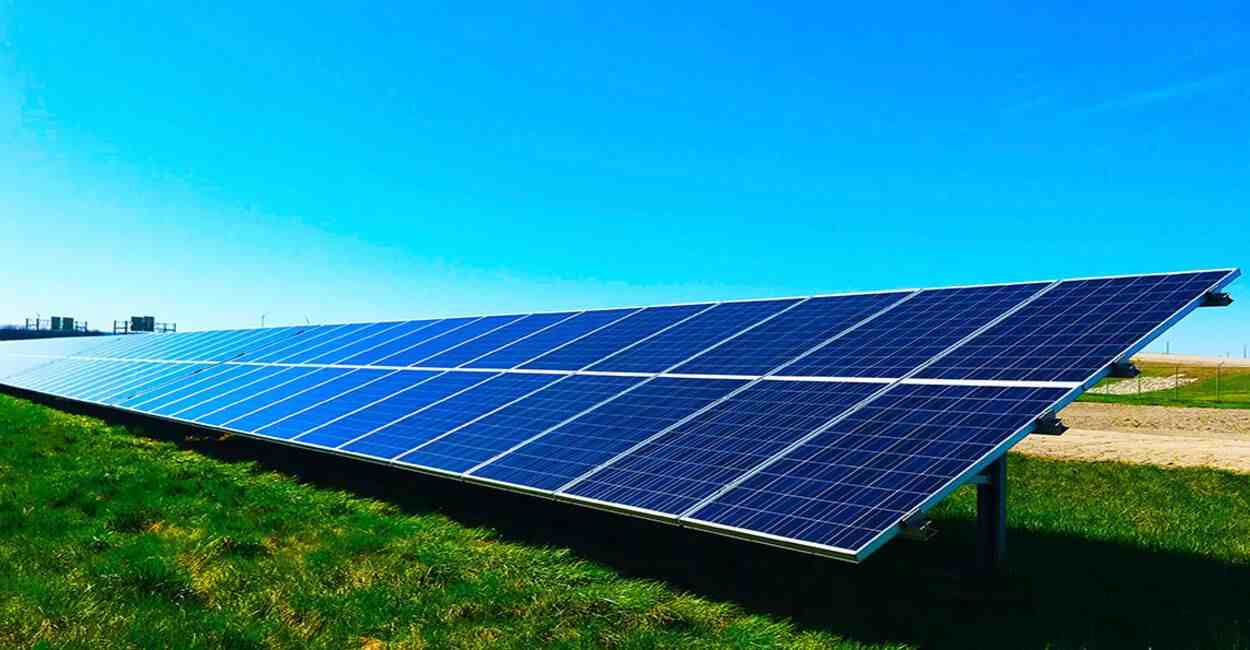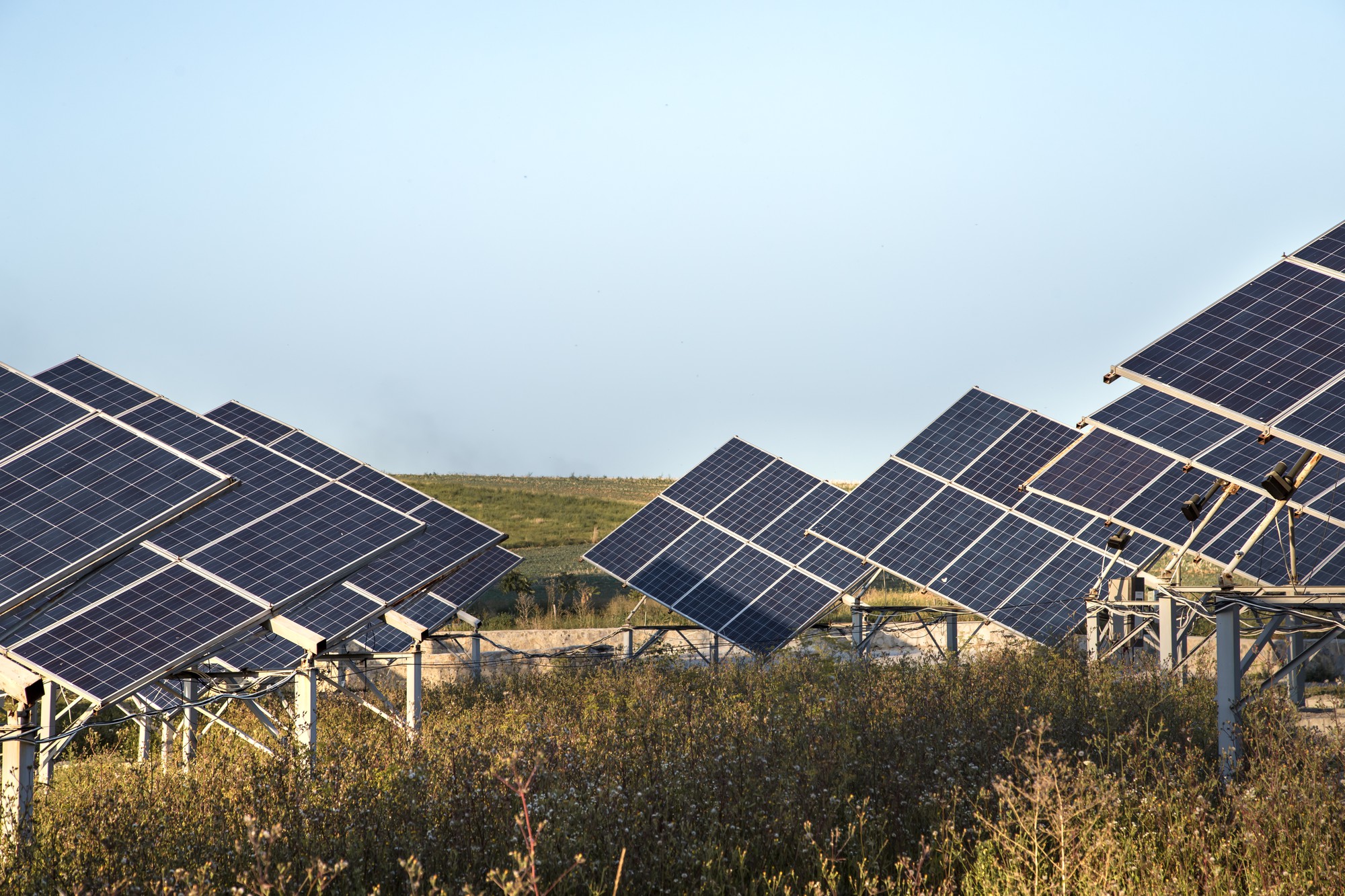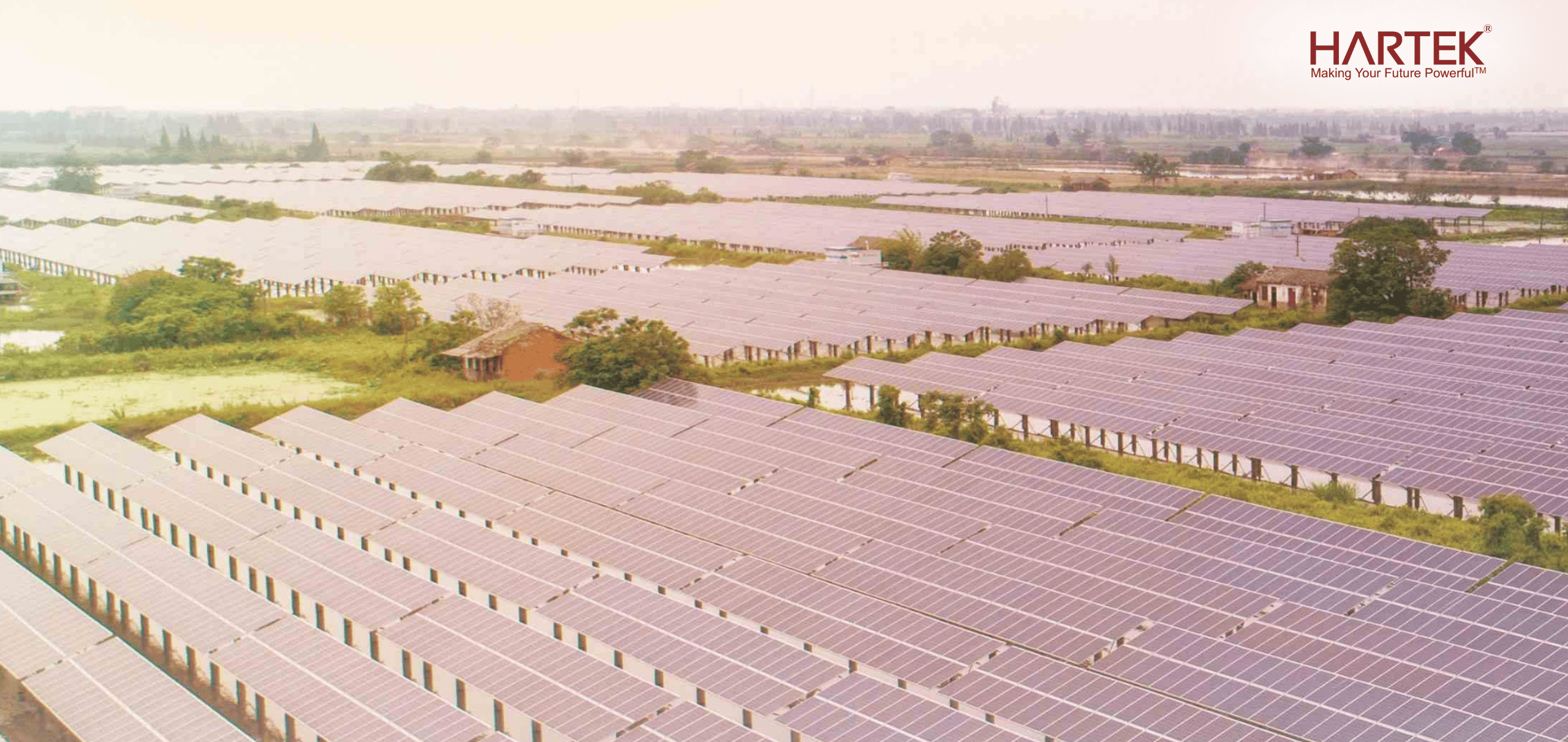India’s renewable energy sector is on track for growth, a steep trajectory, one can say. How? With a 14.2% increase in installed capacity of renewable energy in India and a significant 30% rise in solar power in the last year.
All these have been because of various factors such as government initiatives, technological advancements, private sector investments, and improvements in infrastructure. These driving forces are not only assisting India in getting closer to its renewable energy targets but also placing the country in a position of being a global leader in clean energy.
Let’s explore the exact key factors that had a huge part in India’s renewable energy success!
Government Support: A Driving Force Behind Renewable Energy Growth
The Indian government has played a pivotal role in pushing the renewable energy agenda forward. With ambitious renewable energy targets and strategic policies, India is making great strides toward achieving its clean energy goals.
- National Action Plan on Climate Change (NAPCC): This plan focuses more on increasing India’s reliance on renewable energy to minimize carbon emissions and enhance sustainability.
- Panchamrit Goals: The government’s commitment toward reaching net-zero emissions by 2070. Its primary emphasis will be on solar and wind energy.
- Attractive incentives and subsidies: India has lucrative incentives, subsidies, and attractive tariff schemes for domestic and international investors who invest in solar and wind power projects.

Key policies include:
- Production-Linked Incentive (PLI) Scheme for solar equipment manufacturing.
- Renewable Purchase Obligations (RPO) requiring states and utilities to source a portion of energy from renewables.
- Special focus on solar power installations to boost clean energy capacity.
Technological Advancements: Fueling Solar and Wind Energy Expansion
India’s reliance on fossil fuels has decreased. Additionally, its solar power capacity has increased thanks to technological advancements. Solar energy has gained popularity in recent years due to its increased affordability and efficiency.
- Falling Solar Costs: The cost per watt of solar energy has dropped significantly, making it more affordable for both consumers and businesses.
- Improved Solar Panel Efficiency: New technologies have made solar panels more efficient, enabling better energy generation even under less-than-ideal weather conditions.
- Energy Storage Solutions: The development of battery storage technologies has allowed solar power to be stored and used during non-sunny hours, ensuring a more reliable energy supply.
Private Sector Investment: Powering the Renewable Energy Boom
Private sector investment has played a crucial role in India’s success in renewable energy. Several Indian and international companies are now investing in solar and wind energy projects that are resulting in an increasing the installed capacity of renewable energy in India.
- Key players in the market: Leading firms such as Hartek, Adani Green Energy, Tata Power, and ReNew Power have invested heavily in renewable energy projects across India.
- International Investments: Foreign companies are also contributing to India’s renewable energy boom, providing both capital and expertise.
- Green Bonds: These financial instruments are being used to raise funds for sustainable projects, including solar and wind energy installations.
Infrastructure Development: Connecting Renewable Energy to the Grid
Strong infrastructure is essential for harnessing renewable energy efficiently. For solar and wind energy to be successfully integrated into the grid, significant investment in transmission and distribution infrastructure is required.
- Smart Grids: These ensure improved reliability of electricity supply and accommodate decentralized renewable sources.
- Battery Storage Systems: These store the surplus daytime solar production during the day and supply to the system at low sun generation hours or at high demand times.
- Grid Modernization: This facilitates integrating more seamlessly renewable sources onto the grid with upgraded power grids, minimizing energy loss while also raising power supply delivery efficiencies.
Environmental and Economic Factors: Driving the Transition to Clean Energy
India’s transition to renewable energy is driven not only by environmental concerns but also by economic factors. The growing demand for clean energy is partly a response to global climate change initiatives and India’s desire to reduce its carbon footprint.
- Climate Change Mitigation: India’s commitment to the Paris Agreement drives its focus on increasing renewable energy sources.
- Energy Security: Reducing dependence on imported fossil fuels is critical for India’s energy independence and long-term economic stability.
- Job Creation: The renewable energy sector is rapidly expanding, creating thousands of jobs in the manufacturing, installation, and maintenance of solar and wind energy systems.
Hartek’s Role in India’s Renewable Energy Growth
As the renewable and solar energy uses in India continues to expand, companies like Hartek are playing a crucial role in enabling the country’s green energy transition. Hartek, a leading provider of end-to-end electrical engineering solutions, is actively contributing to the renewable energy sector through:
- Comprehensive EPC Services: Hartek offers Engineering, Procurement, and Construction (EPC) services for both solar and wind energy projects, ensuring efficient and timely installation.
- Solar Power Plant Solutions: Hartek has been involved in the construction of large-scale solar power plants, such as the INR 474 Crore solar energy project in Rajasthan, helping increase India’s solar power capacity.
- Grid Integration: By providing advanced grid management solutions, Hartek is contributing to the seamless integration of renewable energy sources into India’s power grid.
- Innovative Technological Solutions: Hartek leverages cutting-edge technologies to ensure that renewable energy projects are executed with high efficiency and minimal environmental impact.
Hartek’s expertise and commitment to the renewable energy sector are helping India meet its renewable energy targets and achieve a greener future.
Conclusion: A Green Future for India’s Energy Sector
The 14.2% increase in India’s renewable energy installed capacity and 30% surge in solar power are not just numbers—they represent the country’s growing commitment to clean, sustainable energy.
Companies like Hartek are integral to this transformation. With their expertise in EPC services, solar power plant solutions, and grid integration, Hartek is helping India move closer to its renewable energy targets. By continuing to innovate and support the renewable energy sector, Hartek is contributing to the country’s journey towards a cleaner, greener future.
Given the renewable energy potential in India, the nation is primed to expand its green energy capacity even further. India’s renewable energy journey has just begun, and with sustained effort, the nation is poised to lead the global transition to a sustainable energy future.
Frequently Asked Questions
-
What is driving the growth of solar power in India?
Government policies, private investments, and technological advancements have fueled a 30% rise in India’s solar power capacity in the past year. -
How is the Indian government supporting solar power expansion?
India offers incentives, subsidies, and policies like the PLI scheme and Renewable Purchase Obligations (RPO) to boost solar power adoption. -
What role does Hartek play in India’s solar energy sector?
Hartek provides EPC services, grid integration, and solar power plant solutions, contributing to India’s increasing solar energy capacity. -
How does solar power contribute to India’s energy security?
By reducing dependence on fossil fuels and imports, solar power strengthens India’s energy independence and long-term sustainability. -
What are the economic benefits of investing in solar power?
Solar energy investments create jobs, lower electricity costs, and support local industries, driving India’s transition to a green economy.
Share:
Explore More
Keep up-to-date with the most trending news stories that are shaping the world today.







